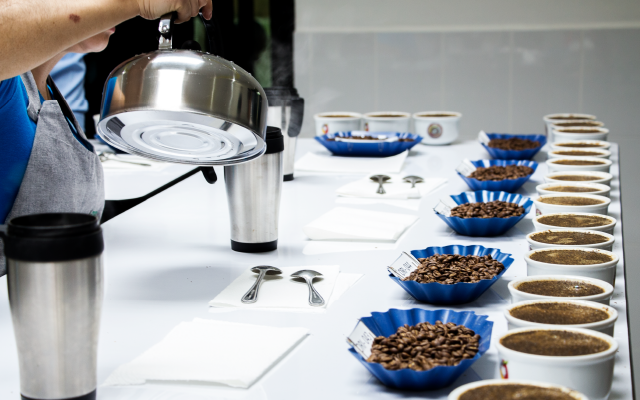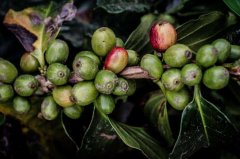What is a microbatch of coffee? Description of characteristics, flavor and taste of Rwanda micro-batch boutique coffee beans
You should often hear "micro-batch" when you go to some cafes. So what are the micro-batches in boutique coffee?
Over time, many terms have been created and adapted to meet the needs and expectations of the boutique coffee industry. One of these terms is microbatches, which are used by many members of the coffee industry to refer to small, exclusive and traceable coffee batches. However, there is still some confusion about the exact definition of the term.

What is a miniature batch?
You will usually find miniature plots on larger farms or estates that are planted in a limited number and picked and processed completely separate from the rest of the farm.
Imagine a farm divided into several plots. Each of these diagrams may be different from each other for a variety of reasons. This may be due to differences in the amount of sunlight received by coffee bean varieties, shade trees, or different parts of the farm. It may even depend on the height of the farm or the direction in which the land faces. The correct combination of these will lead to the unique flavor of coffee, which is different from the standard taste of coffee in the region. The kind of coffee that deserves to be in the spotlight!
Once a special batch has been identified, it can be reserved as a microbatch and harvested and processed separately from the rest of the batch. In addition to the native soil (the natural environment in which a particular coffee is produced, including soil, topography and climate), farmers can also choose special batches that are different from other batches, such as natural processes or honey processes.
The separation of small and large quantities of coffee throughout the planting and processing phase poses a challenge to the infrastructure and logistics of some farmers. It is also more expensive to produce miniature batches.

Why choose micro-batch coffee?
The simple answer is: this is special coffee.
The second is that the significance of micro-batch coffee is to access the traceability and transparency of each batch of coffee, and [can] add more detailed information to each batch. This new connection will help distinguish coffee products and continue to drive the development of the industry.
In fact, there are micro-batches of high-quality coffee such as Rosa Coffee.
Charleston Coffee Roaster Organic Rwanda is a single country of origin from the mountain countries of East Africa of the same name, more specifically, these beans come from the Nyamyumba and Kayove regions of the Bugoi region south of Giseni in western Rwanda and are grown and processed for us by the Coopac Cooperative. These beans come from the fruits of bourbon trees growing on the slopes around Lake Kivu at an altitude of 1400-1850 masl. These trees grow in fertile volcanic soil and use only organic fertilizers for shade throughout the growth process. Carefully selected beans are processed by wet processing. The washing process enhances the flavor of the coffee while reducing the bitterness, which is what we seek to produce our iconic smooth taste. After cleaning and fermentation, the beans are dried on an elevated bed for no less than three weeks.
We are proud to support coffee growers who support fair trade practices, such as Coopac cooperatives. Founded in 2001, the organization has grown into more than 8000 members from six different coffee-growing regions in Rwanda. Coopac is committed to the Fair Trade Initiative to ensure that farmers have access to fair prices for beans and to improving communities such as schools, medical clinics, roads and bridges. In recognition of their efforts to improve the quality of coffee beans in the region, Coopac has won many first place in the excellent coffee cup!
Important Notice :
前街咖啡 FrontStreet Coffee has moved to new addredd:
FrontStreet Coffee Address: 315,Donghua East Road,GuangZhou
Tel:020 38364473
- Prev

Introduction to Noodle Manor Honey Coffee Flavor musician Series Mozart H1 Bean species in Costa Rica
Costa Rica is famous for its charming national parks, rainforests, beaches, volcanoes and delicious coffee. Take a sip of Costa Rican coffee and you will be immersed in the delicacy. Due to ideal growth conditions, including fertile soil, high altitude, cool climate and fresh water, coffee began to grow in Costa Rica sometime in the 1700s. There are eight coffee producing areas.
- Next

Introduction of Fairtrade Fine Coffee Bean Flavor growth characteristics in five Coffee producing areas of Rwanda
Overall, coffee from Rwanda is more rated than coffee from neighboring Zimbabwe and Zambia, but it has not yet been recognized by coffee from Kenya and Tanzania. Rwanda also produces Fairtrade coffee beans. There are several high-altitude Rwanda from Rwanda on the front street, which is suitable for growing boutique coffee. The main coffee-growing areas have volcanic soil rich in nitrogen. Major coffee growing areas
Related
- Detailed explanation of Jadeite planting Land in Panamanian Jadeite Manor introduction to the grading system of Jadeite competitive bidding, Red bid, Green bid and Rose Summer
- Story of Coffee planting in Brenka region of Costa Rica Stonehenge Manor anaerobic heavy honey treatment of flavor mouth
- What's on the barrel of Blue Mountain Coffee beans?
- Can American coffee also pull flowers? How to use hot American style to pull out a good-looking pattern?
- Can you make a cold extract with coffee beans? What is the right proportion for cold-extracted coffee formula?
- Indonesian PWN Gold Mandrine Coffee Origin Features Flavor How to Chong? Mandolin coffee is American.
- A brief introduction to the flavor characteristics of Brazilian yellow bourbon coffee beans
- What is the effect of different water quality on the flavor of cold-extracted coffee? What kind of water is best for brewing coffee?
- Why do you think of Rose Summer whenever you mention Panamanian coffee?
- Introduction to the characteristics of authentic blue mountain coffee bean producing areas? What is the CIB Coffee Authority in Jamaica?

